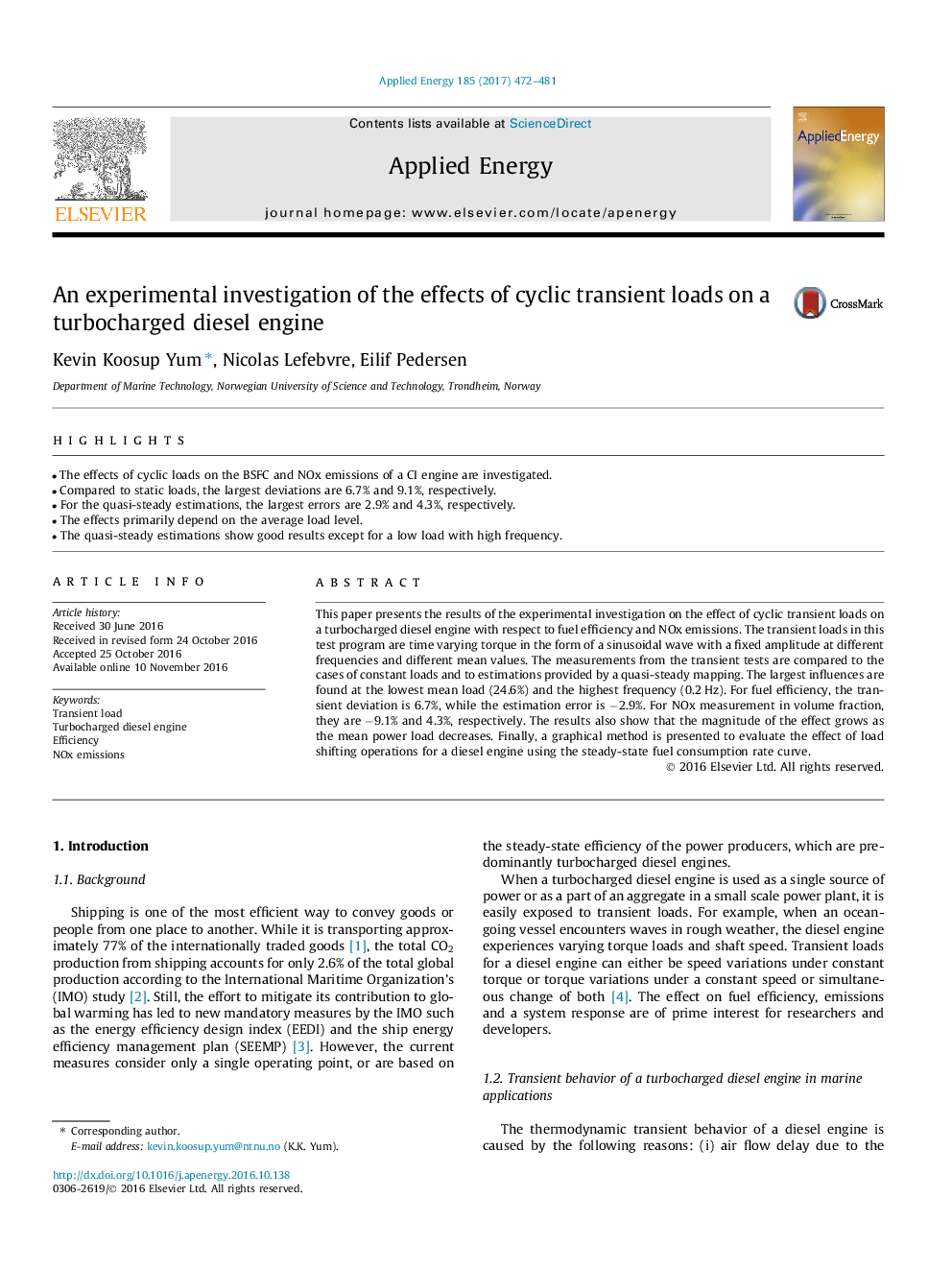| Article ID | Journal | Published Year | Pages | File Type |
|---|---|---|---|---|
| 4916988 | Applied Energy | 2017 | 10 Pages |
Abstract
This paper presents the results of the experimental investigation on the effect of cyclic transient loads on a turbocharged diesel engine with respect to fuel efficiency and NOx emissions. The transient loads in this test program are time varying torque in the form of a sinusoidal wave with a fixed amplitude at different frequencies and different mean values. The measurements from the transient tests are compared to the cases of constant loads and to estimations provided by a quasi-steady mapping. The largest influences are found at the lowest mean load (24.6%) and the highest frequency (0.2Â Hz). For fuel efficiency, the transient deviation is 6.7%, while the estimation error is â2.9%. For NOx measurement in volume fraction, they are â9.1% and 4.3%, respectively. The results also show that the magnitude of the effect grows as the mean power load decreases. Finally, a graphical method is presented to evaluate the effect of load shifting operations for a diesel engine using the steady-state fuel consumption rate curve.
Related Topics
Physical Sciences and Engineering
Energy
Energy Engineering and Power Technology
Authors
Kevin Koosup Yum, Nicolas Lefebvre, Eilif Pedersen,
